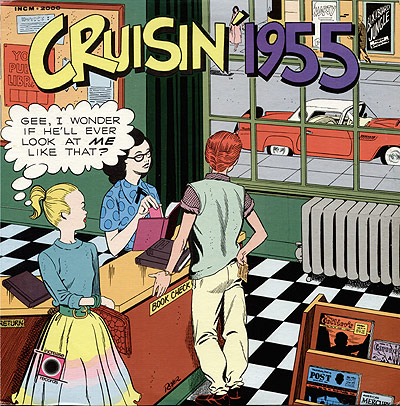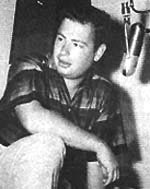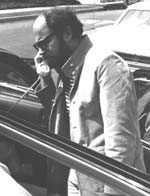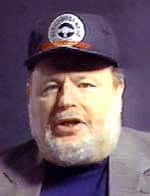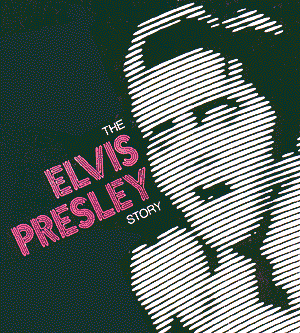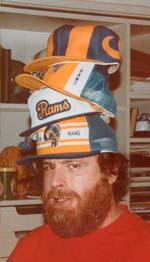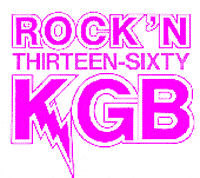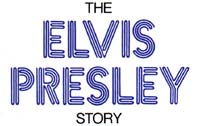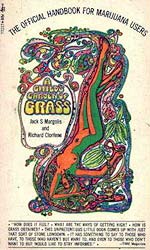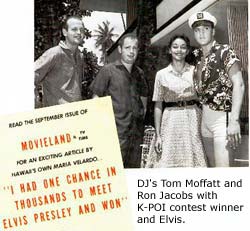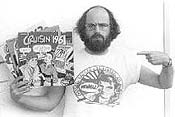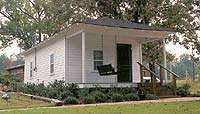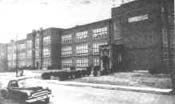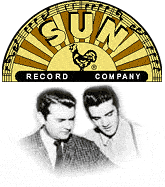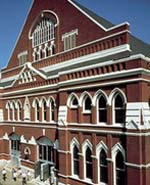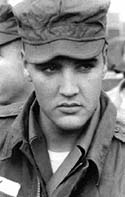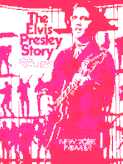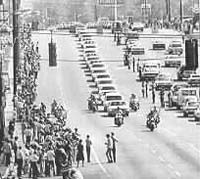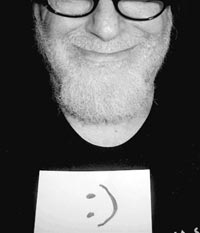The Ron Jacobs Collection
|
A native of Honolulu, Ron Jacobs began broadcasting as a high school reporter at the age of 15, but his professional radio career began in 1953 as the all night disc jockey at KHON, when he dropped out of high school. In 1957, Henry J. Kaiser hired Jacobs and Hawaii radio legend, impresario and record producer Tom Moffatt to play rock 'n' roll music in Hawaii at KHVH Radio. There they met Elvis Presley and his manager, Colonel Tom Parker. Jacobs and Moffatt remained close to Parker for 40 years.
Jacobs joined KPOA in 1958 and earned the distinction of being Hawaii's youngest program director. It was there he began his friendship with Bill Gavin and consultant Mike Joseph. In 1959, Jacobs joined another new station, KPOI, Hawaii's first Top 40 outlet, as PD and morning drive jock. KPOI and the "POI boys" reached the top of the ratings in less than a year. In 1962, Jacobs left for the Mainland, promoted by the Colgreene Corporation to Vice President of Programming. Fine-tuning his formatting concepts, he applied them to KMEN in San Bernadino and KMAK in Fresno, California. Within months, both stations were rated Number One. His success came to the attention of radio consultant Bill Drake, a Fresno competitor. Joining forces, Drake hired Jacobs, then 27, to program KHJ in Los Angeles. It was at KHJ that the "Boss Radio" format achieved national recognition. KHJ reached the Number One position in Los Angeles within six months. While at KHJ, Jacobs produced the 48-hour special, The History of Rock And Roll, radio's first "rockumentary," a term he coined to describe the much-imitated epic broadcast. In 1970, Jacobs left KHJ for a new role, co-founder and vice president of Watermark, Inc. Together with Tom Rounds, an alumnus from KPOI, he launched American Top 40 with Casey Kasem — the most widely syndicated radio program in history. At Watermark, Jacobs also produced the critically-acclaimed and award-winning Elvis Presley Story. Then Jacobs began a long-dreamed-of project — a 13-album record series entitled Cruisin': A History of Rock'n'Roll Radio. Each album re-created the radio show of a disc jockey who held regional dominance during the developing years of rock music. Jacobs also produced several other albums, including A Child's Garden of Grass for Elektra Records.
|
|
There would be one more stop before Jacobs would return to Honolulu: KGB AM/FM Radio in San Diego.Mike Harrison, publisher of Talkers Magazine and the first AOR Editor of Radio & Records, writes:
"In 1972, when I arrived in San Diego, Ron Jacobs' KGBs (AM and FM) were the talk of the national radio industry. The stations were an innovative blend of research and creativity. I had been working on a similar concept that I dubbed Album Oriented Rock ("AOR") -- a departure from progressive FM rock radio. The subsequent three year battle that took place between my KPRI and Jacobs' magnificent KGB was a seminal display of some of the techniques, styles and formatics that would shape the FM dial over the next quarter century. It was the first "AOR" contest and we commanded lots of attention. Looking back at the stuff Jacobs and his great staff were doing at KGB, I realize that the situation forced me to dig deep down and approach FM rock programming with a level of focus and discipline that I never would have needed to reach had I not been so lucky to be in competition with one of rock radio's great experiments -- the Ron Jacobs-era KGB!" Shortly after Jacobs took the reins of KGB, the station was Number One. The KGB Chicken—later known to the nation as "The San Diego Chicken" — also hatched from Jacobs' fertile imagination. In 1972, Ron Jacobs was honored by Billboard magazine—as "Program Director of the Year." Two years later, Billboard named KGB "Station of the Year." In March of 2002, he completed his long-awaited book KHJ: Inside Boss Radio. The book was a large (8.5 x 11") format with 433 total pages. In addition to the 280 Memos to the Boss Jocks that were generated by Jacobs between 1965 and 1969, the book featured hundreds of quotes, subjects, contributors, jargon, contests, promotions, and a KHJ "Who's Who". For the past few years, Ron Jacobs has been back home, in Hawaii. He started "brah-casting" again on July 7, 2007, and streamed contemporary & vintage hawaiian music at WHODAGUYHAWAII.COM through February 28, 2009.
Ron Jacobs passed away, unexpectedly, in Hawaii on March 8, 2016. He was 78.
|
||
“flip-side” (b/w) for The Game Plan to Beat Miami (The Twelve Days of Christmas) produced by Ron Jacobs.The Ron Jacobs Collection
by Ron Jacobs
FROM OAHU TO SAN DIEGOI’d been on the radio since I was 12 doing kid shows. When a paying job opened up I dropped out of high school. At 17 I knew the radio business could provide me the quickest way out of town. Ironically I wanted to leave my birthplace. It is a lifelong dream destination for most people but being born and raised in Hawaii, I had my eyes set on “Hollywood.”
Starting in April 1959, KPOI-AM, the station I programmed and on which I did morning drive, became the #1 station in Honolulu by October. Within two years the owners were looking for stations in California where we could apply what we had learned in the islands, hopefully with the same success.
By 1962 I was the 24-year-old Programming V. P. of Colgreene Broadcasting with ownership of five per cent of the corporation’s stock. The company purchased KITO-AM in San Bernardino, California. I was dispatched there to clone our Honolulu operation from scratch. I knew very few people in Southern California radio.
Art Laboe was a friend. The hot Los Angeles deejay had visited Tom Moffatt and me during several visits to Waikiki. Additionally as a result of our 1960 “fake Ricky Nelson” stunt I was able to meet my programming idol, Chuck Blore. During trips to L.A. it was always KFWB that inspired me to strive for bigger and better things. Being out in the Pacific was a good creative exercise; it forced us to come up with our own ideas. Both Art and Chuck have always been supportive. They boosted my confidence when most people didn’t give KHJ a chance when Bill Drake and I launched Boss Radio in 1965.
But in 1962 my mission was to make something out of a little station in the midst of a muddy cow pasture on Baseline Avenue in “San Berdoo.” This, I quickly learned, was not Hollywood. And I was an unknown radio guy from a small market that only had one thing going for it – it was in the Aloha State. In those Jurassic days a station group could not exceed seven stations, with not more than one in a market. Often it took the F.C.C. several months to approve a license transfer. Until that occurred the new owners were not allowed on the premises or to be involved with the station’s operation. (My, how things have changed!)
I stayed at the company’s trade deal quarters, the Hollywood Plaza Hotel on Vine Street. The not-too-glamorous place was a few blocks up the street from the Gaiety Delicatessen. It was to that restaurant I would go every morning for breakfast, for two reasons. One, I was making up for all the bagels and lox that I was denied in my childhood and two, the Gaiety was the hangout for many unemployed California deejays.
When KITO-AM finally became KMEN-AM in March 1962 the nexus of the air staff guys I’d met over coffee at the Gaiety comprised guys I’d met over coffee at the Gaiety. Of them, no one impressed me more than Bill Watson who had last been at KROY in Sacramento. Bill lived and breathed L. A. He grew up in the San Fernando Valley where he was an athlete and a very cool cat in high school.
Watson became KMEN’s first Program Director and “Mr. Kicks from three ’til six.” We became close friends. He and his late wife Jody took me in as if I were family. I learned the History of Los Angeles Radio from Bill Watson.
But that’s not all I learned. Whenever he was not raving about deejay Al Jarvis, Don MacKinnon, Jim Hawthorne or another Southland Radio icon, Watson launched into rapturous tales of the greatest group of humans ever assembled, the World Championship 1951 Los Angeles Rams professional football team.
“How,” I thought, “could a person be so insanely hung up on a football team? Players named “Crazylegs,” “The Dutchman” and “Tank”?
There was too much radio work to do than dwell on football, but trapped in a car with Watson on the drive from San Berdoo to Hollywood I could always count on a 20-minute L. A. Ram Blast From the Past.
What Watson’s inoculation did to me – how he Rammed this Do-or-Die Dedication into my heart and soul – has affected me ever since. Many years ago, Watson’s passion for football turned to bull fighting, leaving me to perpetuate his affliction.
Details of the twists and turns of where this addiction has taken me are in my story in the September 17, 2000 edition of the NFL INSIDER, the game program for that day’s Rams vs. 49ers contest.
By 1972 when I moved a few hundred miles south of “my” team, loyalty to the Rams was laminated to the brain cells where such emotions are stored. KGB was in San Diego Charger territory. That team was hapless throughout my time there. I tried not to laugh out loud when Charger fans whined and wrung their hands over their losing home team. One year they went 2 and 12 or something horrible like that.
LETS MAKE RECORDS
Colleagues have heard me say repeatedly, “Everyone in the radio business thinks they know how to make a #1 record; everyone in the record business thinks they know how to program a #1 station.”
In the Middle Ages the same person served as both doctor and dentist. And perhaps also as veterinarian. Eventually humans realized that specialization made for a higher level of performance (although I swear that a dentist I went to in Fresno was also a practicing veterinarian.)
Over the years since a “Top 40” hit list was compiled there have been some impressive hits by talented radio people. Some include:
Jim Lowe,”Green Door,” #1 in 1956
Sly (Stewart) & The Family Stone, “Everyday People”, #1 in 1969.
Rick Dees, “Disco Duck,” #1 in 1976.
The Big Bopper (J. P. Richardson), “Chantilly Lace,” #6 in 1958.
Wink Martindale, “Deck of Cards,” #7 in 1959.
Les Crane, “Desiderata,” #8 in 1971.
Bill Anderson, “Still,” #8 in 1963.
Tom Clay, “What The World Needs Now Is Love,” #8 in 1971.
Rufus Thomas, “Walkin’ The Dog,” #10 in 1963.
Peter Wolf (J. Geils Band), “Must Have Got Lost,” #12 in 1974
Waylon Jennings, “Good Ol’ Boys,” #21 in 1980
The zany team of Buchanan & Goodman released a record called “The Flying Saucer (Parts 1 & 2)” in 1956. It was on the wonderfully named Luniverse label. “Saucer” went into orbit, zooming to #3 on the national charts. Chuck Miller wrote about it in Goldmine Magazine in 1977:
“Dickie Goodman took that first step towards sampling, remixing, and symbolic juxtaposition. He was the first performer to use fragments of other people’s hits to build his own chartbusters. Whether it was a Martian with Little Richard’s voice, a President copping lyrics from an Alice Cooper track, or a shark with a taste for the Bee Gees, Goodman’s “snippet” records became popular Top 40 radio movies.
Along the way, he battled rival publishers, record producers, copycats and America’s changing musical tastes to become one of the most successful and distinctive novelty acts in the rock era.” MORE about Dickie Goodman.
In 1959, the opportunity came up to use this technique, as it had for dozens of other deejays across the country. To those of us keiki o ka ‘aina, (born in the Territory of Hawaii), hopefully this would be the year our islands would become the 50th State in the Union. A political matter, this typically had dragged on for years. The white man completed his takeover of the Native Hawaiian Islands by 1900. Hawaii’s “delegate” to Congress couldn’t vote. By 1959 island citizens were pissed off about “taxation without representation.”
While the prospect of Statehood was only a local Hawaii topic I thought it would be fun to use Buchanan & Goodman’s approach to the subject. Thus was born “Hawaii Strikes Back” by Ron & Jon on the SICK label portrayed by yours truly and a radio buddy named John DeMarco. It was bound to go over fairly well in Honolulu since it was played “maximum rotation” on KPOI. Record collectors tell me it keeps going up in value, clearly an example of rarity over content.
One personal motive in co-founding Watermark was to experiment in the record production process. While at Watermark (1969-72) I adhered to my axiom about radio people and record people and what they thought they knew. I concentrated on records where the music was supportive, much like radio production. Attending some Phil Spector recording sessions with Jack Nitzsche conducting a 50-piece orchestra convinced me that records didn’t just “come from heaven,” something I honestly think many radio people believed.
The 1971 “Cruisin'” twelve album series, re-creations of airchecks by major deejays from 1956-1967, used not one note of live music created for them. One of my Watermark albums that did, now sort of a cult classic that brings in bids on eBay, is “A Child’s Garden of Grass.” Billed optimistically as a “Pre-Legalization Comedy,” it was a bit too hip for the time. Sales weren’t helped by the release that same week of a comedy album by a hot new duo called Cheech & Chong.
That brings us to “The 12 Days of Christmas,” released in 1972 and an enterprise that achieved some recognition, albeit totally by the grace of the Pigskin Gods.
This is being written on October 5, 2000. The National Football League is one-third into its 81st season. (My favorite team has a record of 5-0 and a bye this week and that is all I can say. We hard core fans have our superstitions.)
At this time back in 1972 the Miami Dolphins were playing terrific football. They were unbeaten and they just kept on winning. No one before or since has achieved what the ’72 Dolphins did: They ran the table, went undefeated throughout the entire season and championship playoffs. As time passes their unblemished record becomes more awesome.
The year 1972 was also a victorious one for me. Our team had taken KGB-AM-FM in San Diego from worst to first even before the NFL season ended. (That story and one of my favorite production pieces are archived as “The KGB Recycle Documentary.”)
Many of my friends in L.A. would drive down to San Diego to hang out for the weekend. One of them was the actor Reni Santoni, a character actor, one of those people you’ve seen in movies and on TV but don’t know his name.
Perhaps you’ll recognize Reni the next time you see “Howard Stern’s Private Parts,” “Cobra,” “Brewster’s Millions,” “Manimal,” “Dead Men Don’t Wear Plaid,” and as Clint Eastwood’s sidekick Chico in the original “Dirty Harry” plus a bunch of other feature films.
Reni is often cast as a voice-over artist (it was Reni that Dustin Hoffman listened to on the radio in “Rain Man” for instance). Reni also possesses an outlandish sense of humor.
Monday Night Football was new and hot and Reni did a cool Howard Cosell. The 1972 football season was starting soon and we decided that Reni would become a character on KGB’s Monday morning show hosted by “Cap’n Billy” (Hergonson). Reni would phone in a schtick about Sunday’s NFL and babble pretentiously like Cosell about Sunday’s NFL games.
In the years that followed the KGB gig, Reni could be seen on such television programs as “Judging Amy,” “Seinfeld” (playing “Poppy”), “The Practice,” “NYPD Blue,” “Walker, Texas Ranger,” “Murder, She Wrote, “Miami Vice,” “Hill Street Blues,” “Charlie’s Angels” and “The Rockford Files,” to name a few.
As the Dolphins rolled along surprising everyone with their undefeated season, Reni came up with an off-the-wall concept that I was more than happy to produce. Facilitating new schemes that require oddball components is just about my favorite thing. (Or is that merely a definition of “Program Director”?)
With a few hours in Studio West in Kearny Mesa, the only San Diego County recording studio large enough to hold a high school marching band; lyrics written to a public domain Christmas song that would suit the purpose; all-purpose musician Dick Rosmini driving down from Hollywood to pull everything together; Reni’s scribbling of the words for a B Side while the band practiced our masterpiece — the entire thing was on tape within 96 hours of its origin. One phone call to Warner Brothers Records and the master was sold for $5,000.00.
Within 24 hours our anthem to the aqua, coral, blue and white Fantastic Football Fish was blasting out of just about every Miami radio station. They never stopped playing the record until the gun went off with the Dolphins winning Super Bowl VII. The season ended on January 14, 1973 when the Miami Dolphins triumphed over the Washington Redskins 14-7.
Going undefeated, they had won the Vince Lombardi Trophy  which goes to the National Football League Champions  because no one came up with the game plan to beat Miami!
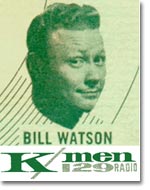

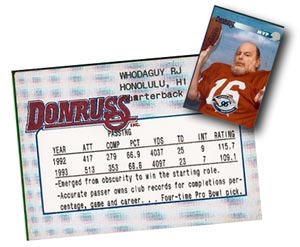
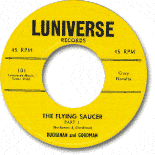
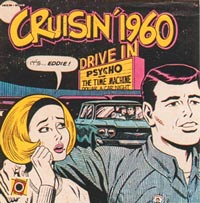


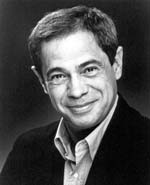

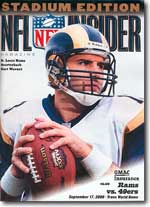
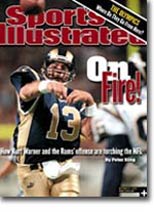
Though my FCC ticket is dated December 23, 1953 (when I was 16), I really didn’t get into full-time Top 40 until 1959, at KPOI, in my hometown of Honolulu. Of course, meeting and becoming friends with Colonel Tom Parker in 1957, working as a 19-year-old PD with the first music format consultant, Mike Joseph, in our “chain” of three (!) stations; and handling the daily set up of a show called “Lucky Lager Dance Time,” the records for which were carefully chosen by a San Francisco advertising agency man, Bill Gavin — well, I knew some stuff by ’59.K-POI became Honolulu’s first full-time rocker in May of 1959. (That is from 6am ’til midnight; after a few ratings we went 24 hours.) The ratings then were Hoopers. K-POI rocketed to #1 — with shares in the high teens and sometimes 20’s — by October. Originally, I did 6-9am, spent the time as PD until 3pm, when I did afternoon drive, then did production and crashed on a couch in my “office.”
My oldest friend in radio (and as of April 1998 my morning drive competition here on Oahu, he with Oldies, me doing Talk), Tom Moffatt, handled 9a – noon, and 6 -9pm. Tom went on to become Hawaii’s top concert promoter as well. The only holdover from the previous staff (call letters, KHON) was an older guy, a pro we called Bob “The Beard” Lowrie. He did 9pm to midnight and pulled a news shift.
From noon to 3pm was Jumpin’ George West, who also did news. West was the only person I fired from three stations: K-POI, K/MEN and KHJ. At the latter two he was Andy West. His is the voice you hear on “official” broadcasts of Robert Kennedy’s Assassination.
At K-POI, in a smaller town and slower times, the Poi Boys specialized in what I think of as “Circus Radio.” (I never make a move without thinking of what Colonel Parker would do in a given situation. His hand can be seen in everything from the KHJ Big Kahuna to the KGB Chicken.)
In its first few years, K-POI jocks were featured in “Thons” that reaped much newspaper publicity. The first, and greatest, was when Tom Rounds, our News Director, stayed awake in a funky department store’s window for 8 1/2 days (!!!) thus breaking the record in the Guinness Book when few people even knew of that volume. This was done to make TR an instant personality and to get my butt off afternoon drive, which he took over, after being on the front page of the morning paper for a week. (In 1964, Rounds, Moffatt and I started Arena Associates, which evolved into Watermark six years later.)
K-POI jocks hung from cars suspended from cranes, broadcast underwater from a glamorous Waikiki pool, and competed in Drum-A-Thons, Pool-A-Thons, Insult-A-Thons, donkey basketball games and endless stuff that caught the fancy of the kids turning on to Elvis, Frankie, Ricky, Fabian, etc.
This air check was made in February 1964, two months before I was sent to Hong Kong to check out the possibilities of a pirate station broadcasting from Macao into the then-British colony. Landing back in Honolulu, I was arrested for possession of THREE MILLIGRAMS of “marihuana.” But on this “hauoli kakahiaka” (happy morning) of the air check I had no idea I would be, within a year: busted, married, living in Hong Kong for a year, spending 30 days in Halawa Jail (listening to Fred Kiemel do MY show), hired as PD of KHJ, driving a new Caddy and living in Beverly Hills.
So, this is Jacobs the jock, a few years after K-POI was a solid #1. By then, Drake’s approach had convinced me to move the logos to the front of records. We ran our own board, answered the phones, filled out two logs, flipped two-minute records, watched the news wire and made our own coffee. There was no such thing as a “post” to “hit,” children. You just felt it man.
The Donn Tyler mentioned on the tape and heard voicing some spots is now my colleague at KCCN. Tom Rounds is the voice on the commercial that begins, “Concentrate on what you are doing…” The newsman is Don Robbs, head of Hawaii Public Television and the Voice of the Rainbows baseball team for 20-plus years. The program was done without the assistance of any stimulants or illegal substances.
And an inside P.S. to anyone who has ever worked with me: “How were the phones?”
HOT, baby, take a listen.
Ron Jacobs
Kaneohe, Hawaii
April 23, 1998
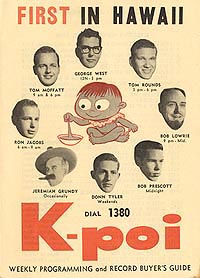
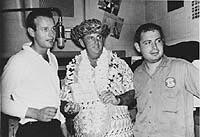
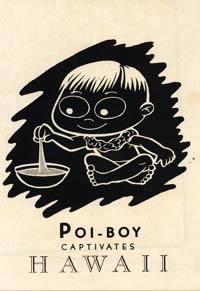
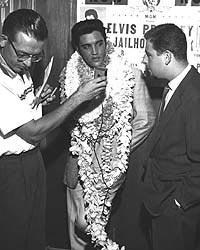
In March, I received a call from Mike Brown, who along with his father Willet, owned KGB-AM in San Diego. Mike said his dad wanted to meet with me. Willet Brown was a true radio pioneer and great gentleman. One did not turn down an invitation to meet with him. The three of us met at The Brown Derby in Hollywood and the Browns offered me the job as Program Director of KGB, which was in the ratings gutter. It had been on top in the mid-60s when the station closely duplicated the format that Bill Drake and I developed in 1965 when I was the original “Boss” KHJ PD. The Browns were used to being winners.
I told the gentlemen that I was extremely flattered, but was heading back home. They offered me a tidy sum to spend a few days in San Diego, check out the radio scene and write them a report. This I did. After reading my report, Mike called me to meet again. After making me an offer I couldn’t refuse (probably the highest PD salary in the country at the time — double what I was making when I left KHJ), providing me with a new Cadillac and giving me three weeks off twice a year to visit Maui, I accepted. Who wouldn’t?
I first had to hire an assistant, which was also part of my deal. Robert W. Morgan had recommended a producer he worked with during his year at WIND in Chicago. This was Rick Leibert, age 22, who happened to be visiting Los Angeles. (Leibert was involved in all our programming moves at KGB and I was most proud, when I finally left there in 1976, that he succeeded me in being named Billboard Magazine Program Director of the Year in our format category.) Rick came up with the name of our successful “Homegrown” LP project, did a lot of the heavy lifting and in his first year at the helm of KGB, created the Skyshows, now an institution in San Diego, which continue to this day. He runs a company called Events Marketing and produces exceptional spectacles.
After going to San Diego and analyzing the market, I knew that something could be done there but had nothing specific in mind. I told the Browns that I needed six weeks to do some research–sort of an unheard of concept back then. Also, the station was losing 40 thousand dollars a month, big bucks back then, but they gave me a month to do “research” and plot a strategy.
Battle Plan
I was fortunate to locate Ken Moye, who was in charge of the computer department at San Diego State University. I enlisted his support. (Remember, in those days, there were no CRT computer screens and data had to be entered on punch cards.) Moye also had a background in statistics, was a musician and had worked earlier as a radio announcer. I asked him how large a sample would be required to get an accurate audience response since I did, and still do, consider Arbitron sample sizes a joke. His reply was one half of one per cent of the population of San Diego County, which equaled around 4000 people. (By comparison, the ARB sample was around 800, if I recall.)
We conceived a survey in which we asked people about musical tastes, radio listening habits, station preferences, etc. One of the many tricks I learned from Moye is where to locate people over 18, from different parts of a market, who will put up with a 10-minute interview. The answer was the DMV. Also, all surveys were conducted by station employees or their spouses; there was no one paid by the hour to fill them out themselves.
After all that was done (and it was way too complex to describe here, but was certainly a forerunner of focus groups) and the key-punch ladies had entered all the data, Moye, Leibert and I went to the computer department at SDSU after midnight one March night and watched the first printouts come out. We realized we were looking at information no one had ever quantified to that extent before. It was upon that info–the music part–which we used to begin structuring our music format.
I was given free rein with one exception, the same as at KHJ: Don’t change the call letters. I contemplated a way to establish a new identity while taking advantage of KGB’s “brand name.” Environmental consciousness had begun to stir by then as people were becoming aware of such things, so I got the idea to “recycle” the entire radio station. All over town we posted notices made to look official and cold, which read:
PUBLIC NOTICE:
Radio Station K.G.B. will be recycled
on April 2, 1972.
We ran these as small ads in the newspaper legal announcements . And on KGB’s air, we ran a track with only that same wording between every few records. We spent very little money, but most people in town knew by April 2 that something would be happening at 1360 on the AM dial.
Back in 1959, when we changed KHON into K-POI and created Hawaii’s first and probably greatest rock station, we ran the same horrible record continuously for 24 hours to attract attention. (Also, this silly, prolonged attention-getter allowed us to do many last-minute things behind the scenes. Listening to the KGB Recycle Doc for two days got to be very psychedelic after a while.)
I decided to do a repetitive piece for the changeover in San Diego. But not just a dumb record played over and over. It would be a quasi-documentary that was really part put-on, part put-down, part promo and hopefully, compelling radio. (In an odd way, it might have been a mis-infommercial.)
I also not only wanted to bust out of the rigid Boss Radio strictures that had begun to bore me to death, but I wanted to do some tongue-in-cheek narrative and production work after playing it so straight with “The History of Rock and Roll” and “The Elvis Presley Story.” Those epics were written by Pete Johnson and Jerry Hopkins, respectively. They were fantastic scripts, but like the KHJ/Boss Format, I thought everyone, including me, had started to take it all a bit too seriously. Besides, this “recycle thing” was just an extended promo, to be heard one weekend in one market.
I took inventory of what elements we had, what we could come up with, and started writing the copy with no particular length in mind, just as long as it ended with a plug for the new format and a production effect that would be “the sound of a bird flying up its own butt,” since to the listener tuning in there was no obvious start or finish.
With a completed script that positioned all the ingredients we had assembled, I drove up to Watermark in L.A. (On the way up and back I lowered the Caddy’s window to thrust my middle finger at Richard Nixon’s “Western White House” in San Clemente, part of a regular ritual involved in driving regularly to L.A. to see the Rams.)
The Production Crew
I assembled the piece at Watermark, because by then there was a custom 8-track board. Also, I felt comfortable there, having done the first “American Top 40” show with Casey Kasem in that tiny studio as well as spending many hours with Wink Martindale there when he voiced the 12-hour Elvis program. The engineer was Bill Hergonson (later to become a KGB jock.) He recalls,
“I was in Pasadena. You called me from San Diego and said to sleep in your empty house in Laurel Canyon. I remember there was a water bed on the floor, a blanket and a copy of the ‘Child’s Garden of Grass’ book. I met you and Michael Gwynne at the studio the next morning and we did it in about four hours.”
The opening FX voice is that of Bobby Ocean, one of the absolute best production people with whom I ever worked. I remember at one point calling in Ocean and asking him to, “Put together a few minutes of songs with socially significant lyrics.” He said “OK” and came back an hour later with a collage that to this day gives me chills when I hear it. (Even more so when considering it was done with a razor blade and on 2-track machines.) Later, in L. A., the music changes in that collage were run through a custom phaser that had been built, as had all of Watermark’s original gear, by David Freese of Hanley Sound, who would go on to handle the sound at Woodstock. There was little audio processing available then, especially in non-music studios, and we all thought those segues were “far out, man.”
Ocean included in one of his elements the “Boss Radio” bit (“…the music that the boss tells me to play”) from an early George Carlin album. Bobby produced the “School of Broadcasting Intro” and “Jock Meeting” material for audio skits he originally created for a Programming Seminar put on by Bob Hamilton (the publisher, not the PD) and his buddy Buzz Bennett. At that time, Ocean was doing mid-days at KCBQ and Bennett was the PD. Ocean can’t recall if he did this material for the first seminar in San Carlos (north of San Diego) in the Spring of 1970, or the second one at Whistler’s Mountain in the Fall of 1970.
About those events, Ocean writes:
“That was the gathering planned with the most hippie idealism. I seem to remember they were paying homage (although arrogantly) to their inspiration, Bill Gavin. They had their first ‘awards ceremony’ at which cheap plastic gold-plated trophy cups were presented to every soul in attendance, instead of leaving anyone out.”
Regarding the intro (which launches the Recycle Documentary), Ocean says,
“I tried to sound mechanically cartoonish. The ‘staff meeting’ was from another part of the presentation, which also was never for air, but rather the seminar audience. We were poking fun at ourselves during the era of Omnipotent Format. In those days we lived at the station. Among the other voices included are Rich Brother Robbin and Chuck Browning. We were baby broadcasters with Rolling Stones ambitions, and we were showing off. We were poking fun at the established order. This made us admirably dangerous and sexually appealing, or so we thought.”
Ocean is still at it, producing Numero Uno stuff for select stations.
The “History of Rock and Roll” was influenced by NBC’s “Biographies in Sound,” which I studied in the mid-50’s while at KGU. Robert W. Morgan’s talent as a ‘straight’ announcer fit the KHJ show perfectly. For the overall narrator of the KGB production I wanted someone with radio experience but who could also take subtle direction, since I considered the project a tongue-in-cheek affair. In my mind I heard John Facenda’s classic narration of NFL film highlights; how menacing it sounded when a team went to play in “the frozen tundra” of Green Bay.
I was lucky to know Michael Gwynne, who had worked at K-POI after I left Honolulu. Following jock stints in New York and the Bay Area, Gwynne turned to acting. He had already appeared in several films, usually as a scowling detective, when we met at the original Watermark Studios in late-March 1972 to cut the tracks for the KGB Recycle production. Gwynne did, and does, possess some of the best pipes I’ve ever heard and I wrote the narration with his voice and style in mind. People have been very favorable about the copy, but without Mike’s fantastic line readings, it would have turned out much less effective.
Liner Notes
The bit about “Radio K.A.O.S.” is from a single called “Chaos Parts 1 & 2” by Arbogast and Ross on Liberty Records. (Hey, don’t think I remember that one; I had to call my old friend Dr. Demento for the details.)
Regarding Bob Reagan’s, “KGB Pulsebeat” announcement, there was an old ET lying around that had that moment preserved on it. I can’t verify when ground was broken for those studios on Pacific Coast Highway, but it was before the freeway bypassed the station. From the decor and architecture, I would guess somewhere in the mid to late 50s.
Richard Irwin has asked me, “Right after ‘radio’s once powerful voice became a whisper’ there is a clip of someone laughing uncontrollably about Phil Harris. I am woefully ignorant as to the source of this clip.” I wanted something to illustrate how radio had descended to the sound of people talking to themselves, laughing at their own jokes, “playing to the room”–not unlike today in many instances, unfortunately –and I found this track on one of those classic “Blooper” albums. It is deliberately there to be confusing and inaudible. Jay Marks (see “Comment” below) has identified the “someone laughing” as veteran newscaster Lowell Thomas.
All the “Cruisin'” LP tracks were recorded by the jocks in 1970 for that series of recreated shows.. Joe Niagara, WIBG Philadelphia, 1957; Dick Biondi, WKBW Buffalo, 1960; B. Mitchell Reed, WMCA New York, 1963. The jingles were in use at the time of the jock’s “Cruisin'” year, but as to when they were recorded, all I can tell you is that it would have been, obviously, sometime prior.
Hergonson recalls that I hauled in a bunch of LP’s and the tapes produced in San Diego. Since I wanted to make the overarching background music the antithesis of typical rock radio “production music,” I brought along a copy of the soundtrack from “A Clockwork Orange,” with Walter Carlos’ synthesizer-enhanced versions of Beethoven’s Ninth Symphony, “Pomp and Circumstance” by Elgar and Rossini’s “William Tell Overture.” Another album was called “Harvard Strikes,” which chronicled the student riots and, as it turned out, Hergonson had worked on it in 1968.
The Recycle Documentary was recycling stuff on audio tape 25 years ago and now it is being re-recycled worldwide on the Internet, a concept that was inconceivable to us at the time (other than Marshall McLuhan’s predictions, of course.)
Off and Running
I sensed we were assembling some different kind of animal as we put the thing together. We mixed it down. I took the quarter-inch master and headed back down to 4141 Pacific Coast Highway, San Diego. Listening to the competition, KCBQ, KDEO and KPRI, I hoped that the innocent-looking 10-inch box sitting on the red leather seat of my new 1972 Cadillac Coupe DeVille held the radio-active object that would trigger their downfall.
My final thought, looking back after Wow-25-Years: You’re only as good as those you are up against. That’s what Bill Drake and I learned in 1962’s “Battle of Fresno.” Regarding KGB, credit must be given to Buzz Bennett who had built a formidable 50,000 watt powerhouse at KCBQ and was aided tremendously by Jack McCoy’s “Last Contest,” perhaps the toughest AM promotion I ever ran up against. By August of 1972, KGB began simulcasting full-time (courtesy of a neat little scam we pulled on the FCC.) We then had to deal with KPRI, one of the first “underground” stations on the West Coast, coming on the heels of KMPX in San Francisco (Tom Donahue’s creation, bless his soul) and KPPC in Pasadena. We also had our hands full when Mike Harrison arrived at KPRI, where he coined the phrase “AOR.”
Although being a consistent ratings leader, KGB has not been given the recognition over the years for continuous quality entertainment and breaking new ground. I consider it right up there with anything I was lucky enough to have worked on.
Our first huge promotion happened on November 12, 1972, when more than 50,000 fans filled San Diego Stadium, the largest concert crowd in California at the time. For $1.01, with all profits going to charity, KGB listeners saw the J. Geils Band, Quicksilver Messenger Service, Foghat, Dr. Hook’s Medicine Show, Jesse Collin Young and others. From a newspaper account: “There’s a word the kids use these days called ‘vibes.’ What vibes means is feeling, atmosphere, mood. The vibes this day were good.”
The first “Homegrown” album was released in 1973. It featured local musicians performing their songs about the area, cover art by a San Diegan and liner notes by a teenage KGB listener named Cameron Crowe. The album sold more copies locally than Led Zeppelin’s “Stairway To Heaven” LP, the year’s #1 record, and became an annual tradition.
And would there be any crazy sports mascots running around today if not for the original KGB Chicken?
by Ron Jacobs
Burbank, California, 1997
whodaguy@lava.net
Michael Gwynne is represented by the Paradigm Agency, New York.
Contact Jeb Bernstein, (212) 246-1030.
Ron Jacobs wishes to acknowledge his computer gurus Frank Mullin and Ray Randolph.
Ray is the unofficial 93/KHJ Boss Radio archivist.
SPECIAL THANKS TO: John Barcroft, Mark Chetverikov, Dr. Demento, Henry Diltz, Bill Hergonson, Rick Leibert, Randy Massey, Bobby Ocean, Russ Puls, Tom Rounds, and Elizabeth Salazar.

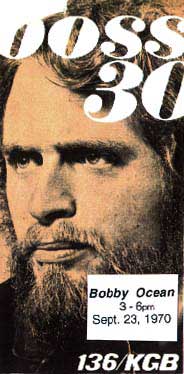



On the 25th anniversary of his death, REELRADIO presented The Elvis Presley Story in its entirety. Seven performances were streamed between August 16 and August 19, 2002. REELRADIO listeners heard all 13 chapters, some for the first time.Hour 13 is the final chapter of The Elvis Presley Story. It includes the voices of Elvis’ colleagues, friends and fans around the world reacting to news of the death of The King of Rock ‘n’ Roll . . . a 1971 speech by Elvis to the National Junior Chambers of Commerce when he was named one of America’s Outstanding Young Men of the Year . . . a montage of Elvis’ million-selling hits, which Jacobs calls, “One of the finest audio collages ever made, let alone produced 30 years ago with razor blades and splicing tape” . . . and live reports from correspondents in Memphis and around the world.
The opening and closing announcements by Bobby Ocean, streamed on August 16-19, 2002 and this final hour of The Elvis Presley Story have been restored to stereo.
Now, we present the last hour of the Final Tribute: Chapter 13 of The Elvis Presley Story, as a permanent exhibit in the Ron Jacobs Collection.
| I was never happy with the audio quality of The History of Rock and Roll. Voices were recorded quickly, on the phone. On many of these the sound was subpar. I left KHJ in 1969 watching for a better vehicle and conditions in which to produce it. At our new company, Watermark, I checked out spoken word records. Movie rights to books might sell for a million dollars, but this was not the case for permission to make record albums from books.
A friend, Jack S Margolis, showed me the manuscript for his daring new book, A Child’s Garden of Grass. I asked the publishers, Simon & Schuster, about the cost of audio rights for the book. No such figure had even been established. We purchased them for next to nothing.
I first met Jerry Hopkins in the mid-60s while he was writing for the Steve Allen Show. At the end of 1969, Hopkins began a project suggested to him by Jim Morrison: The life story of Elvis Presley. (It would be the first biography of a rock star.) Hopkins knew that I’d met Elvis and Colonel Parker in 1957 during their first visit to Hawaii. Fellow deejay Tom Moffatt and I pulled a prank that became “The First Elvis Impersonator.” Fortunately Elvis and Colonel dug it. We each emceed concerts at Honolulu Stadium. A lifelong friendship began with Parker, who became a mentor. On his many Hawaii trips, Colonel arranged exclusive Elvis promotions for us.
Hopkins knew of this special relationship and asked if I thought he could get Colonel’s blessing for his book. I told him “no,” but if he was cool maybe Colonel would look the other way and not cause doors to slam in his face. I made a phone call. Hopkins received a wink-and-nod green light. He headed for Tupelo, Memphis and Nashville to talk to everyone who was a part of Elvis’ life. Then he interviewed others from Hollywood to Vegas to New York. And Moffatt and I about our Hawaii escapades.
There were projects at Watermark. Six months of research and obtaining clearances for the Cruisin’ album series and the launch of American Top 40. I didn’t hear much from Hopkins until 1971 when Elvis: A Biography was published. Two things struck me: What a good book. And, this could be the “rockumentary” on which we would take our time and do things correctly. Obtaining the radio rights to Elvis was as easy as it had been for Grass. I requisitioned a new Nagra recorder and the gear necessary to do National Geographic-type field recordings. “Why that?” asked Hopkins, “I have all my cassette interviews.” “Because,” I told him, “most journalists’ tapes sound like the off-mike recordings that kidnappers make of their victims.” We shaved off our beards and headed for Tupelo, Mississippi.
The first person we interviewed was Mrs. Fay Harris. I knew that we were in the heart of history when the sprightly lady told us that she was a friend and neighbor of Mrs. Gladys Presley. “Elvis was born just a few blocks from where I live,” she said. I’d heard various meanings of the term “shotgun house.” A man as country as the Mississippi River itself told me the origin of the phrase. Seeing the restored Presley home bore out his explanation: “With that there hallway running down the middle you could walk in the front door and blast a shotgun right on through the back door.”
We finished our Tupelo interviews and made like Elvis did years before. We headed for the big city, Memphis. When the Presley family moved there Elvis attended Humes High School. The only trace of The King was a small plaque in the main hallway mentioning their most famous alum. Totally into the craft of radio documentaries, I recorded the ambient sound of the empty hallway for use behind the narrative about Elvis’ high school days. George Klein was class president and a buddy of Elvis. He was with WHBQ and showed Hopkins and I around, arranging for interviews of folks not even in the book.
Sun Records was not yet a tourist attraction. There we met the former Marion Keisker and recorded her repeating the words she told Sam Phillips, about hearing “a white man who could sing like a Negro.” Phillips himself, a remarkable man who never seems to age, recounted his first impressions of Elvis and the mythic Sun sessions. I recalled the lyrics to Sam Cooke’s “Wonderful World,” which described my pathetic school years: “Don’t know much about history, Don’t know much biology, Don’t know much about a science book, Don’t know much about the French I took,” and realized that Hopkins and I were pursuing and preserving true pop cultural history.
We reached the point in Elvis’ story where he and the boys—Scotty Moore and Bill Black—hit the road and were drawing crowds and driving audiences crazy with their new sound. People all over the South heard them on KWKH out of Shreveport, Louisiana. We talked to Scotty and drummer D. J. Fontana about those times (Black passed away in 1965), and interviewed others from Elvis’ past like, the “Memphis Mafia,” whom I met in Hawaii in 1957. And then we Hertzed it for Nashville.
Hopkins and I were anxious to visit Ryman Auditorium, home to the Grand Ol’ Opry; and to talk with some of the Nashville musicians who played with Elvis during his career. We were in Music City and it seemed like everyone had a favorite Elvis story to tell. Producers, publishers, publicists; they all wanted to talk about The King. Fortunately the town was full of professional recording studios. Buying more quarter-inch recording tape and blank five-inch reels was no big deal.
We’d taped dozens of people-from the pastor of the Tupelo First Assembly of God Church, to the couple who hired Elvis as a truck driver, to his uncle who manned the Graceland gates. It was time to return to Hollywood and cover another major chapter in Elvis’ life: His time in the U. S. Army. The K-POI connection and Colonel Parker again provided material never heard before nationally. The only radio interview Elvis did when stationed in Germany was with Tom Moffatt, via phone, on K-POI. Because of his huge fan support in Hawaii, Elvis promised to do his first post-Army concert in Honolulu. He returned to the Islands and was greeted with a king-size Aloha.
We interviewed the people who witnessed The Elvis Presley Story first hand, from Honolulu to Hollywood to Hartford. No one could have written such a fairy tale. Until then I thought of “Rags to Riches” as Tony Bennett’s 1953 pop hit. Ironically not only did it describe Elvis’ rise to fame, but he himself later recorded the song. Colonel Parker invited me to watch Elvis tape his 1968 “comeback” TV special at NBC-TV. The show’s director Steve Binder and audio engineer Bones Howe discussed the production for our program. We interviewed people involved with Elvis’ movie career and his record- breaking performances in Las Vegas.
Bill Hergonson, who would work with me on Watermark and KGB projects, moved into our cramped La Cienega Boulevard studio. We broke down the many reels of field recordings of interviews and sounds—categorizing, editing and timing material. History of Rock and Roll staffer Ellen Pelissero applied lessons learned during the making of that pioneer project. Eventually Hopkins had a working script for the 12-hour program. No auditions were held for narrator. There was only one choice, Wink Martindale. A Memphis deejay when Elvis exploded on the scene, Wink became a top rated Los Angeles jock and perpetual TV game show host. He was laid back, with a comforting touch of the South in his delivery and he was a pro to the max.
I wanted to do something different for the show’s overall musical theme. The History of Rock and Roll didn’t have a recurring theme. It featured KHJ’s a cappella jingles by Johnny Mann and that was it. To me, no matter the musical directions Elvis explored, I felt the most basic sounds—acoustic and unamplified—best represented where he came from. Whenever I met up with Elvis he was quiet and almost shy. In those days, unplugged. Never had a “soft” ballad such as “Love Me Tender” become a smash hit.
In Los Angeles I was fortunate to meet talented, interesting people in music, movies and TV. When KHJ became #1 and one of the most influential radio stations in America, artists came by to visit. “Boss Radio” presented concerts all around Southern California, starring the biggest names. The station was on Melrose Avenue, surrounded by the lots of three major movie studios. Actors, big and small, could be found eating lunch daily at the infamous Nickodell’s, next to the KHJ building. After leaving there I worked with some world class artists at the Watermark “Farm Studio.” (Carpentry by Harrison Ford.)
I never met a more accomplished musician-arranger-producer or more insouciant human being than Dick Rosmini. He agreed to lead the program’s band. “How many ways can you play ‘Hound Dog?'” I asked this guitar and banjo virtuoso. He replied, “How many ways do you want it?”
Finally, after months of effort by many, the program was primed to go. Nearly 150 songs and 70 people would tell the tale of Elvis. Across the U.S.A. radio stations signed up. The Elvis Presley Story was the first syndicated American program purchased by the British Broadcasting Corporation (BBC). It debuted on WPIX-FM, New York, on October 24, 1971.
The Elvis Presley Story was a commercial and critical success. I heard “on very good authority” that The King himself listened to most of it, and thought it was cool. So did a certain Colonel. Then, roll forward to Tuesday, August 17, 1977. I’d been back home in Honolulu for just over a year, doing mornings and programming KKUA-AM. Not long after leaving the studio, the bells on the news teletype machine rang out the way I heard them for the first time in 1963, when news of Jack Kennedy’s murder came down the AP wire. That same rarely used word appeared: “FLASH.” Details of Elvis’ death sputtered in from Memphis.
Jerry Hopkins and I were aboard a redeye that evening bound for L.A. In the Watermark North Hollywood studios the following morning the master tape for Hour 12 was disassembled. A new script with new elements and additional narration by Wink Martindale would comprise the 13th and final chapter. By the weekend it was complete and shipped to radio stations worldwide.
I’ll always remember watching the press conference after that first Honolulu concert back in 1957, the one I emceed. Of all the questions and answers that day, one reply stuck in my mind. Someone asked, “Has success affected your life?” Speaking slowly, Elvis said, “Of course. I never realized anything like this was possible, that I’d ever be in Hawaii, or Las Vegas, or Hollywood. It’s quite a change to jump into this stuff. If you’re not careful, you’ll crack up.”
|
Old School Deejay
1955 ~ 2007
Ron Jacobs is currently CarPoolTunneled out.
Keyboarditis.
“Liner Notes” might be forthcoming.
(Hey, all other RJ material on ReelRadio comes with minutiae-filled facts and titillating anecdotes.)
NOTE: As Whodaguy,
Ron Jacobs was PD and morning drive at #1 KKUA-Honolulu, 1976-79. During those years, Senator Barack Obama attended Punahou School; freshman though senior years. Jacobs blithely claims, “I was Obama’s morning man!” Why not? Both guys were born in Waikiki, O’ahu, Hawai’i. The young Obama and old man RJ dined at some of the fine barter deal restaurants on Kuhio Ave.

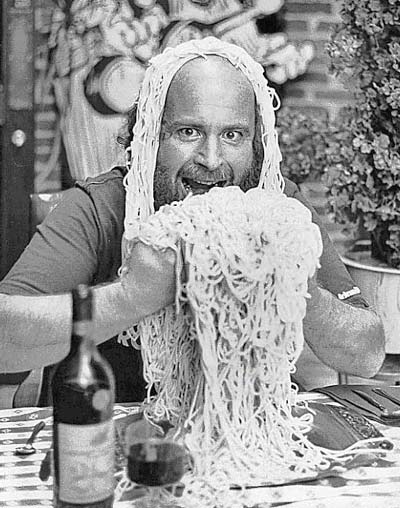
When Ron Jacobs created the original CRUISIN’ series of albums and tapes in 1971, there were seven, spanning 1956-1962.
Shortly after the success of the original seven, Jacobs produced six additional CRUISIN’ albums, featuring 1955, and 1963 through 1967.
But before the second six, he recorded narration for a radio show, and released a promotional LP for radio stations featuring the opening segments of the original CRUISIN’ Seven.
This special REELRADIO exhibit combines the original Ron Jacobs radio program narration with the original CRUISIN’ Series Demo LP.
Archived from Jacobs’ private collection, the narration presented in this exhibit has not been broadcast or distributed in any form since 1971. The text that follows was included on a paper insert with the CRUISIN’ SERIES LP demo.
crusin’ krew-zin v. dictionary definition
Teenage custom of driving around, primarily to listen to pop music stations on the car radio, while observing other kids and cars doing the same thing; popular all over the United States beginning in the mid-Fifties.
The word cruisin’ doesn’t appear in the dictionary, but it’s a familiar word to millions of people who did it. The new seven-record series on Increase Records, CRUISIN’ THE FIFTIES AND SIXTIES, is a year-by-year recreation of pop music radio during the years 1956 through 1962.
Each album is not just a collection of the top pop music of a particular year but a total recreation by a top disc jockey (of that year) doing his original program over a major pop music station. That means actual commercials, promotional jingles, sound effects, newscast simulations and even record hop announcements in addition to the original records themselves.
The series was produced with unprecedented attention to detail. One disc jockey, Dick Biondi of Chicago, called his old home town, Buffalo, New York, just to get an accurate ten-year-old weather report. Another, “Arnie Woo Woo Ginsburg” of Boston, showed up in the studio carrying a suitcase full of chrome kazoos, cowbells, oogah horns and other noisemakers he’d used on the air in 1961. Then, after laying them out on a towel by the mike, much like a brain surgeon preparing to operate, “Woo Woo” wailed.
CRUISIN’ producer Ron Jacobs monitored thousands of feet of tape, travelled over 10,000 miles and rooted through forgotten files and cluttered basements for old commercials, station promos and jingles. He also managed to get clearances for 84 different records, of which 42 are certified million-sellers, and all are from the Top 30 of their respective years.
The disc jockeys who appear on the series were picked after a month of carefully researching a decade’s issues of BILLBOARD, including tabulating all disc jockey mentions. The names were then cross checked with audience rating services and longtime radio expert Bill Gavin  all this just to determine which jocks on which stations represented each year most accurately.
Once all the material had been collected, weeks were spent in the studio carefully integrating almost 1,000 separate cues, and timing each year’s “radio program” so it could be mastered for tape in four exactly equal parts. This was done to eliminate any dead space on CRUISIN’ cassettes and cartridges, making each “rebroadcast” as realistic as possible and similar to the “tracking” effect of records. CRUISIN’ was, in fact, originally conceived as a tape project: the first major one in the industry. After all, cruisin’ meant cars, and listening to rock stations on the car radio; not until the enormous growth of in-car tape equipment was anyone able to recreate not only the sound of yesterday but the environment where the sound was first heard.
Says Jacobs: “The full impact of such originally American social, technological, artistic and economic influences as rock and roll and Top 40 radio may not be fully realized in this century. But regardless of what time will ultimately be required to allow full historic perspective, there is the obligation to preserve the material so the media itself, not just written renews and descriptions, will exist for future analysis.
This isn’t just nostalgia. It’s history!”
Increase Records’ CRUISIN’ series is available on records and tape cassettes and cartridges, and is distributed by Chess Records (disc) and by the GRT Corporation (tape).
7 of The All-Time Top 20 Rock Jox
The seven disc jockeys in the CRUISIN’ series were selected as the best living representatives of Fifties and Sixties radio from seven top American radio cities.
Recreating one of his old radio shows from 1956 is Robin Seymour, who then was with WKMH in Dearborn, Michigan. He had come to this suburban Detroit station from Armed Forces Radio and soon his warm, confidential tone had won him teenagers and housewives alike. His BOBBIN’ WITH ROBIN show was the reason BILLBOARD named him Disc Jockey of the Year in 1953, and HIT PARADER magazine did the same in 1954. Today he’s in television and concert promotion in Detroit.
In 1957 it was Joe Niagara, top jock in “Wibbageland,” the greater Philadelphia area within range of “Radio 99.” He had been raised in South Philly (birthplace of Mario Lanza and Joey Bishop) and had come to WIBG in 1947 from service in the Panama Canal Zone. In terms of style, he is generally acknowledged as one of the nation’s most influential dee jays, a title he continues to wear at WIBG today.
Jack Carney was one of radio’s gypsies before he settled in St. Louis in 1958 at WIL. This is where he made his mark in Top 40, concocting bizarre stunts that appealed to so many (mostly teenagers) his station went from number seven in a seven-station city to number one in six weeks. Today he’s in his eighth year at KSFO in San Francisco.
In 1959 it was Hunter Hancock, the excitable and often corny host of HUNTlN’ WITH HUNTER on KGFJ in Los Angeles. The odd thing about his show, which was aimed at Southern California’s Negro population, was Hancock wasn’t black; he never said be was, of course, but no one ever suspected he wasn’t. He retired from radio a few years ago, and is presently associated with WESTERN OUTDOOR NEWS in public relations and field circulation work.
Dick Biondi, the “wild-eye-Trailian,” “the supersonic spaghetti slurper” (his descriptions), is the jock for 1960. He was screaming over seventeen states that year from WKBW in Buffalo, New York, and following top-rated runs at KRLA, Los Angeles and on the Mutual Network, his powerful lungs have since become an institution at WCFL in Chicago.
In 1961, Arnie “Woo Woo” Ginsburg was engineering the NIGHT TRAIN show on Boston’s WMEX. (It was trains going “woo woo” in the night which gave him his nickname.) For twelve years, from 1956 to 1967, he was Boston’s top disc jockey. Today he’s in sales at WRKO in the same city and also is active in commercial production and voicing.
Production techniques had reached some sort of zenith in kitsch artistry by 1962 and Russ “Weird Beard” Knight, then at KLIF in Dallas, was perfectly suited. He had a graduate degree in journalism, but it was buried during this period  buried in sound effects, echo and rhyme. Knight is now Program Consultant for WCUE in Akron, Ohio.
The Man and The Company
The man, Ron Jacobs, and Increase Records’ parent company, Watermark, are uniquely suited for the recorded pop music radio series called CRUISIN’.
CRUISIN’ is a year-by-year recreation of Top 40 radio from 1956 to 1962; not only was Jacobs active in pop radio during this period, he also was the producer of the highly acclaimed THE HISTORY OF ROCK AND ROLL. Watermark, a corporation he serves as an officer, is an entertainment and media organization that has no equal or precedent.
Jacobs recently concluded a four-year career as program director of KHJ in Los Angeles, a station he brought from its near-the-basement position to the top in just five months, where it remained so long as he was in charge. It was while in this position he produced the 48-hour long “rockumentary,” a program which has been syndicated over much of the world and has been included in many museums and libraries, including the Library of Congress, the Lincoln Center for the Performing Arts and Juilliard School of Muslc.
Jacobs was a 12-year veteran of radio when he came to KHJ in 1965. In Hawaii he had been the island’s top disc jockey and later was a programming and production executive responsible for launching a number of top-rated stations in Hawaii and on “the mainland.”
Then, believing there should be a healthly environment for people who’d been successful on traditional terms, an organization where such people could create freely, Jacobs left radio in 1969 to help found one  Watermark. Today this company has interests in concert and festival promotion (Arena Associates), radio programming (AMERICAN TOP 40), records (Increase), tape production (THE CASSETTE GAZETTE), audio commercials (such as EASY RIDER) and program consultation (National General).
Peg & Eddie
To have a cover concept as unique as the content of the CRUISIN’ series, it was decided to take a young couple and age them (in comic strip frames) through each year, noting carefully the changes in dress and hair styles, as well as social attitudes.
Thus, Peg graduates from a Fifties pony tail to a Sixties Jackie Kennedy bouffant/flip … while Eddie lets his flat top grow out. There’s an Edsel on one cover (1957) and Alfred Hitchcock’s PSYCHO is on a marquee of the drive-in on another (1960). On a third cover, regular gasoline is priced at under twenty cents (Eddie was pumping gas that year, 1958) and Eddie’s friend is wearing a WE SHALL OVERCOME button on a fourth (1962).
Peg and Eddie and their world  our world  were created by Jere Alan Brian, Increase Records vice president, and Paul Gruwell, Increase art director.
“Peg and Eddie became real characters to us,” says Gruwell. “We know even more about them than the artwork indicates.”
Gruwell was an animation layout man at Hanna-Barbera working on the HUCK FINN, SCOOBY DOO, THE THREE MUSKETEERS and FANTASTIC FOUR TV shows before joining Increase. Mike Royer, who did the cover art, is one of the men behind the TARZAN comic strip.
From RJ to Wacko, 2008, 2009. “Almonds Move Backwards In Time”
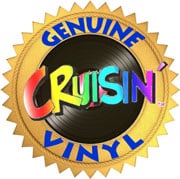
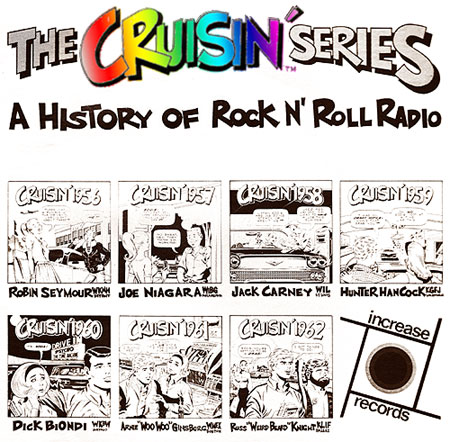
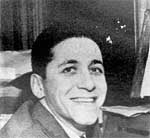
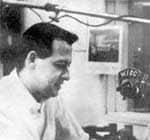
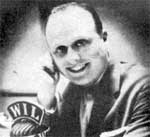


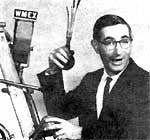

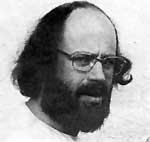

By Jerry Hopkins
It’s 1955 in the CRUISIN’ series and popular music is changing radically. The moon/June/spoon generation Is giving way to a noisier, brasher rock ‘n’ roll tribe. The message in Billboard magazine this year is “Keep pop alive in ’55” and adults are calling the new music a teen-age fad, but there is no stopping it. 1955 is, after all, the year of “The Blackboard Jungle” and the song from that film, Bill Haley’s Rock Around the Clock.
One of the men helping shape the burgeoning rock revolution was “Jumpin'” George Oxford, a mild-mannered white Southern family man who when facing a radio microphone turned into a dapper, jive-talklng rhythm and blues disc jockey, introducing records by black artists for a station beamed to the black market, KSAN In San Francisco.
Picture of Jumpin’ George Oxford
“Jumpin'” George OxfordIn 1955, Old “Jumpin'” was one of radio’s pros, with 18 years of radio experience. He was heard on KSAN morning, afternoon and night, 43 hours a week. (Today most rock jocks work only a three-hour shift, six days a week.) This repeated exposure, coupled with a growing white R&B audience, made “Jumpin’ ” George Oxford one of the most effective radio personalities of the time.
His slogan for the year (you’ll hear it here)  a variation on the futile plea in Billboard, “Be alive in ’55!”)
The music was alive that year. Mitch Miller and his chorus may have been crashing through The Yellow Rose of Texas, while Bill Hayes crooned “The Ballad of Davy Crockett”, but the artists attracting teen-agers were singing about black denim trousers and motorcycle boots. Snooky Lanson, Russell Arms, Glzelle MacKenzie and Dorothy Collins began to experience difficulty interpreting R&B for “Your Hit Parade.” And in Nashville, a former truck driver called Presley was named Outstanding New Country Artist of the Year and then signed a record contract with RCA.
1955 was a year of non-musical changes as well. The anti-communist paranoia created almost slngle-handedly by Sen. Joe McCarthy was waning. President Eisenhower ended U.S. occupation of Germany. The Supreme Court gave local authorities the task of integrating public schools. Fifteen mlllion workers came together as the A F of L and the CIO merged. School kids formed lines to try a new polio vaccine invented by Jonas Salk.
On the lighter side In ’55, the Oscar for the best film song went to Love Is a Many-Splendored Thing (the movie of the year was “Marty”) . . . slumber parties were popular, and so were shoe taps and strapless prom dresses with lots of crinoline . . . Mary Martin was “Peter Pan” . . . and after winning six of the last seven World Series, the Yankees were beaten by the Brooklyn Dodgers.
Nationwide, wherever a radio could be heard, the rock revolution was on. “Tutti frutti,” sang Little Richard in 1955, “aw rootie!”
 Jerry Hopkins
The original Cruisin series was conceived and produced by Ron Jacobs. The “airchecks” on CRUISIN’ were not actual broadcasts, rather, they were masterful re-creations featuring legendary air talent.
Our thanks to RJ for making this classic material available to REELRADIO.
